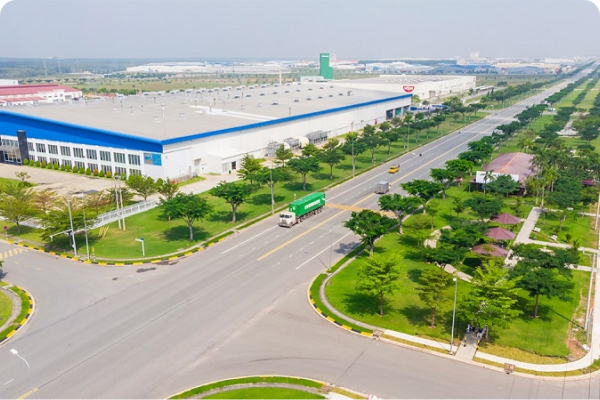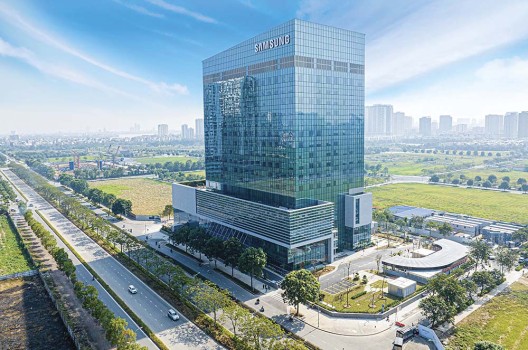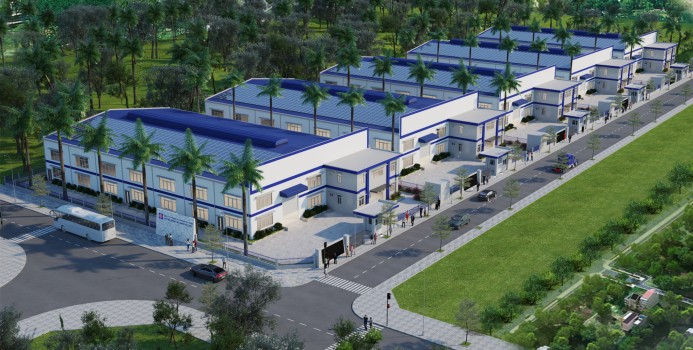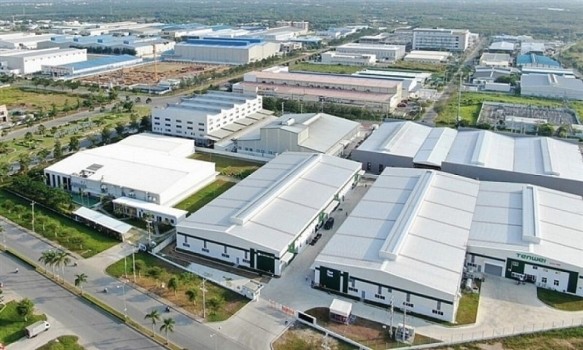VIET NAM 'S INDUSTRIAL REAL ESTATE RENT HAS INCREASED BY 70%
Vietnam continues to solidify its position as one of the most cost-competitive global destinations for industrial and logistics investment, thanks to three key advantages: real estate rental prices, labor costs, and energy costs.
According to the "Global Industrial Dynamics 2025" report on the logistics and industrial sector across more than 120 markets worldwide, the recent years have seen a sharp increase in demand for industrial real estate while supply remains limited. This has driven up rental prices in many regions globally. Some markets have recorded record prices, with some even seeing rents more than double within just five years.
To date, the average global rent has increased by about 41% compared to the end of 2019. The United States leads this trend with an increase of up to 57%. Similarly, in other markets across the Americas, rental prices fluctuated sharply, dropped in 2020, recovered from 2021 to 2023, and have recently seen a decline in some areas in 2024.
In Europe, the Middle East, and Africa, rents have continued to rise significantly, now averaging 38% higher than in 2019. Countries like the UK, the Czech Republic, the Netherlands, and Norway have recorded sharp increases. Turkey, in particular, has seen a 90% increase, primarily due to high inflation, which peaked at 85.5% in October 2022 and was still at 38.1% in March 2025.
In the Asia-Pacific region, the average rent has increased by 25% compared to 2019, but there is a clear divergence among markets. Australia and Vietnam have seen an increase of over 70%, while India, Japan, Thailand, and mainland China have not experienced significant fluctuations.
However, despite the rent increase, Vietnam is still considered attractive compared to other countries in the region. Specifically, the average rent in Hanoi is approximately $5.3/sqm/month, and in Ho Chi Minh City, it is $4.9/sqm/month.

Furthermore, logistics and manufacturing operations remain heavily dependent on human factors. An abundant labor supply and reasonable labor costs are key factors influencing decisions on where to locate facilities and operational strategies—from determining which stages of production should be performed in-house to the level of investment in automation.
In Vietnam, labor costs are currently less than 25% of the global median wage, placing the country among the lowest-cost labor markets in the Asia-Pacific region.
In addition, the electricity consumption of modern warehouses is increasing, driven by automation systems, smart management, advanced material handling equipment, and the growing trend of using electric vehicles. This makes operating costs a crucial factor in investment calculations. Vietnam continues to score well, as its industrial electricity costs are among the lowest globally, only higher than those of Indonesia and Nigeria.
According to Ms. Trang Bui, CEO of Cushman & Wakefield Vietnam, the combination of these three core cost factors—real estate rent, labor, and electricity—has helped Vietnam become an attractive investment destination on the global industrial map, especially in the manufacturing and logistics sectors. Notably, Vietnam also benefits from the "China+1" trend and the "nearshoring" strategy of moving production closer to consumer markets to reduce dependency on a single geographic region.
Therefore, "foreign investors are actively seeking land, partnering with domestic developers, or re-leasing existing assets to quickly deploy operations. Nevertheless, to optimize production efficiency, sourcing, and distribution of goods to consumers, businesses need to develop a suitable real estate strategy that aligns with their long-term operational goals," the Cushman & Wakefield representative concluded.
Source: Vneconomy
Nguồn:
Related news

09/08/2025
VIETNAM AFFIRMS ITS POSITION AS A GLOBAL TRADE AND MANUFACTURING HUB
Vietnam Affirms Its Position as a Global Trade and Manufacturing Hub

09/08/2025
VIET NAM 'S INDUSTRIAL REAL ESTATE RENT HAS INCREASED BY 70%
VIET NAM 'S INDUSTRIAL REAL ESTATE RENT HAS INCREASED BY 70%

09/08/2025
WILL THE DEMAND FOR INDUSTRIAL REAL ESTATE CONTINUE TO RISE ?
Will the Demand for Industrial Real Estate Continue to Rise?

09/08/2025
U.S. RECIPROCAL TARIFFS OFFICIALLY TAKE EFFECT
U.S. RECIPROCAL TARIFFS OFFICIALLY TAKE EFFECT
Copyright © 2022 Viet Huong IP., Ltd. All Rights Reserved
TOP



